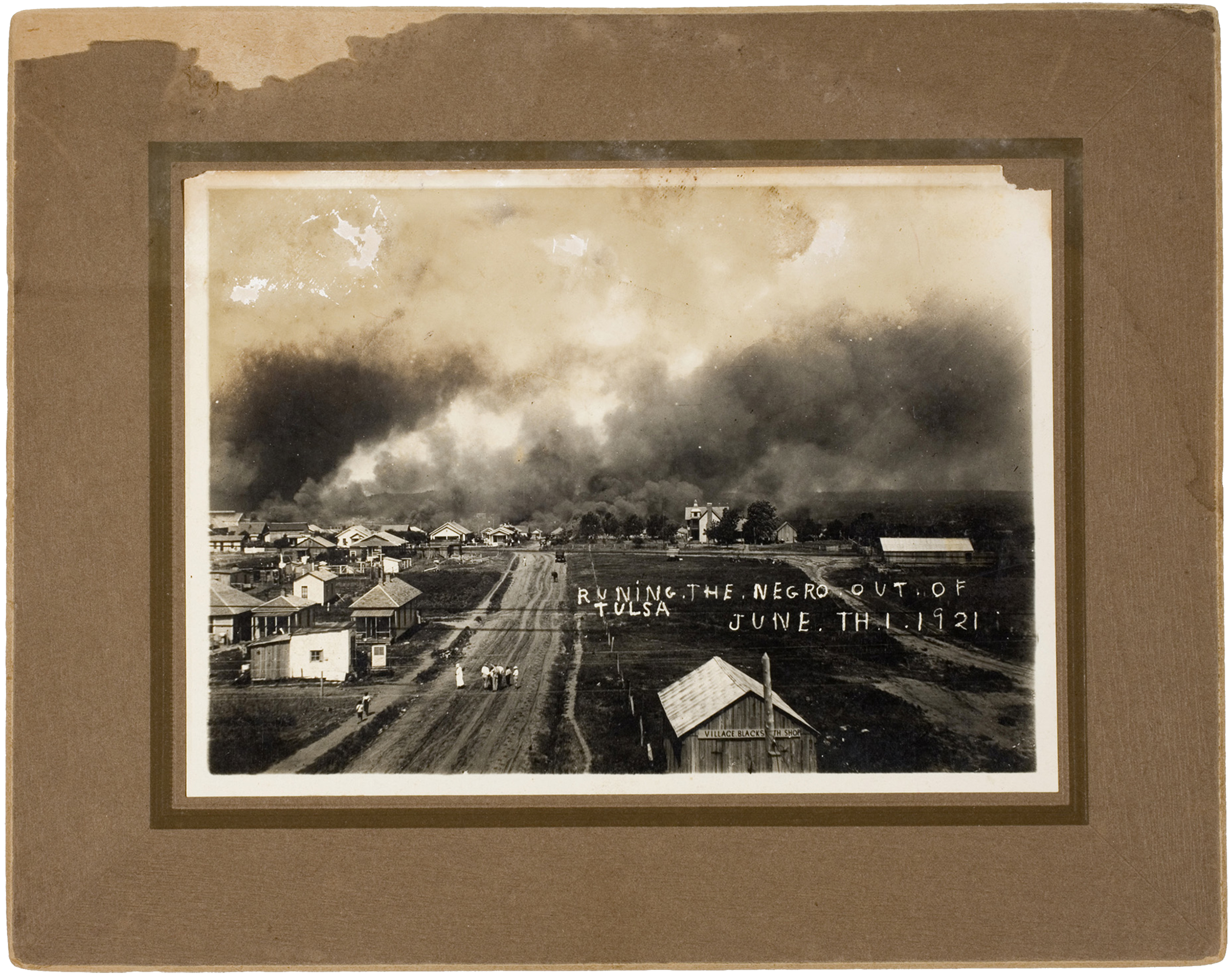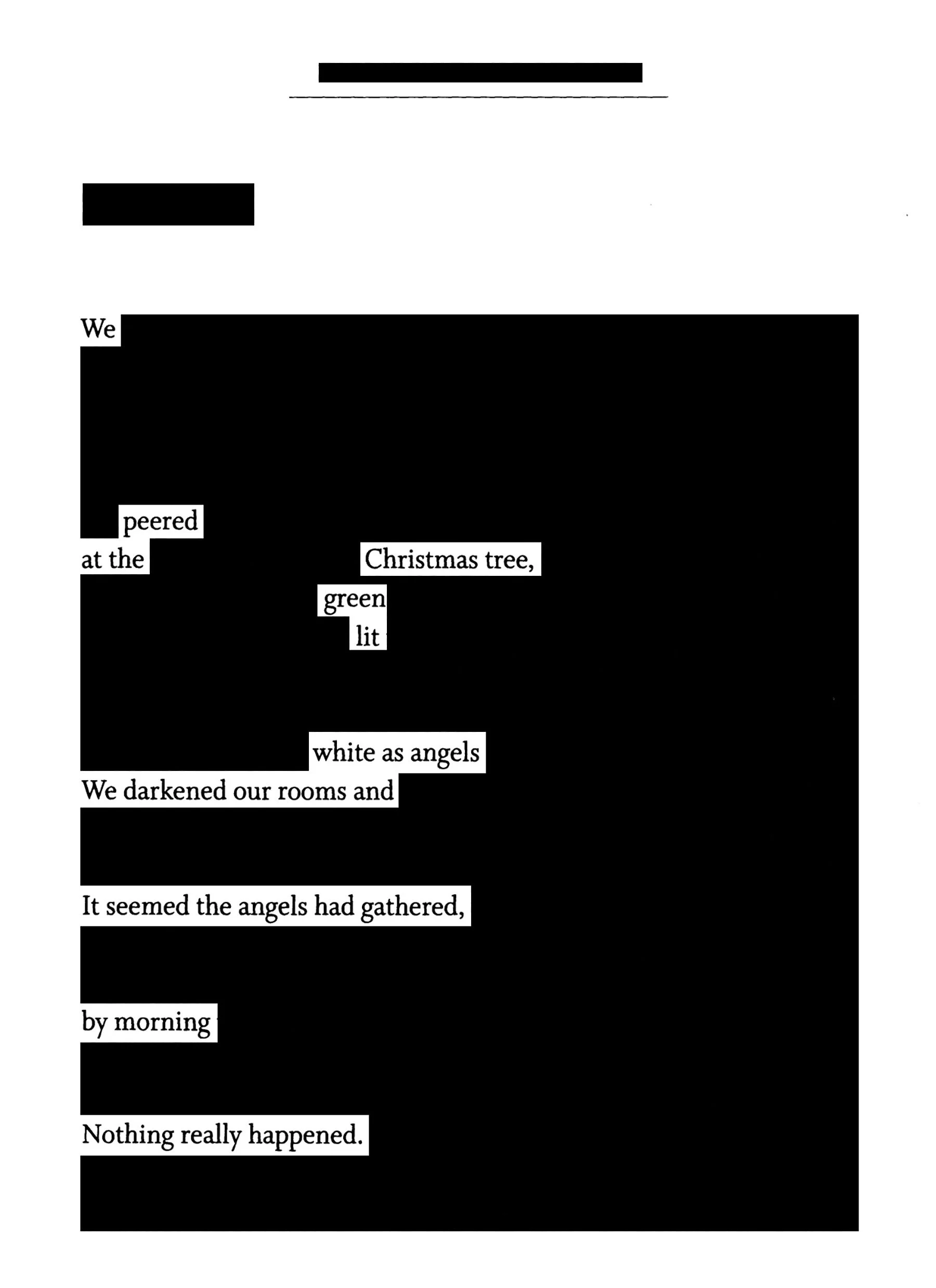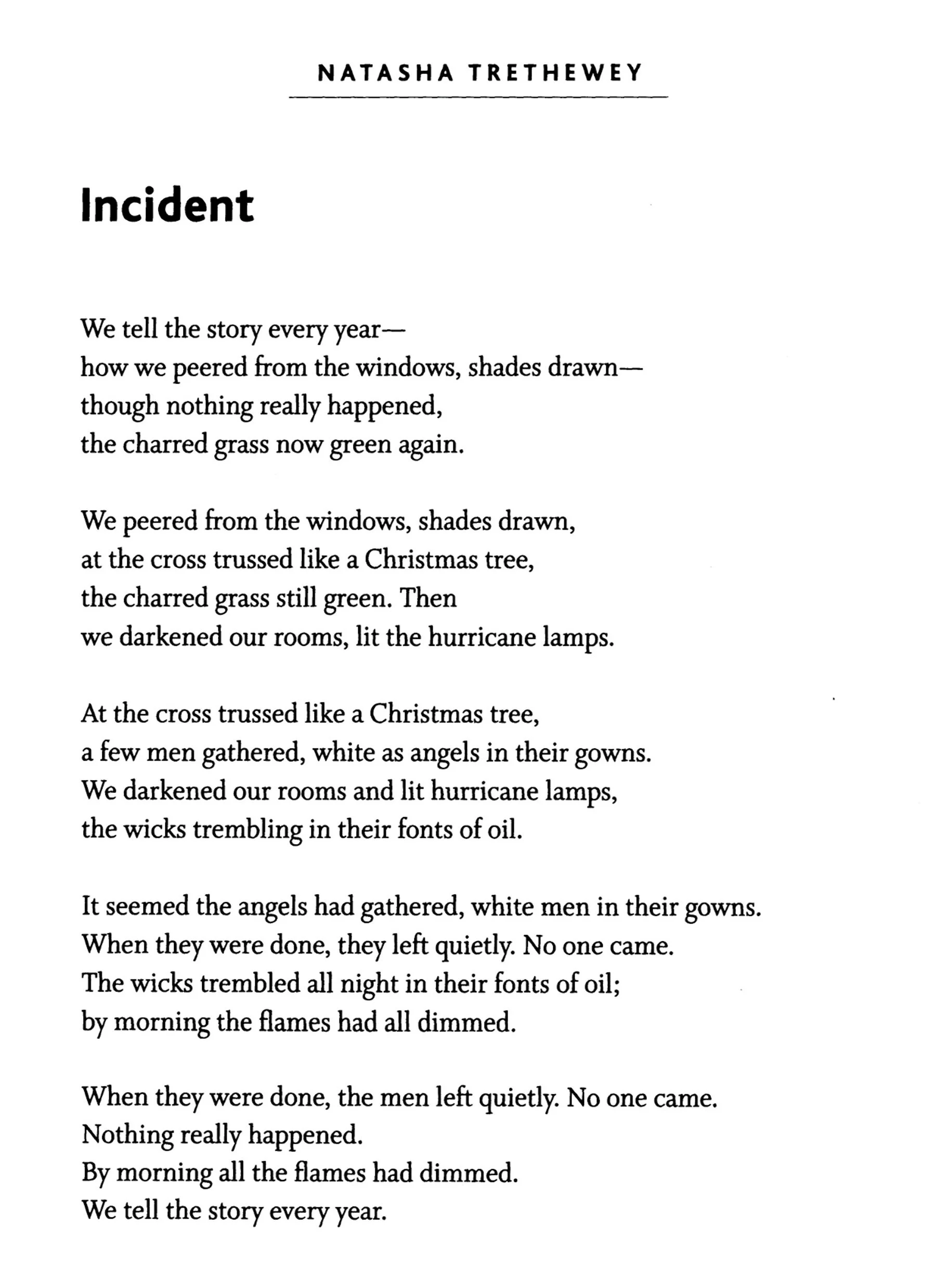2. Notes for a Poem on the Tulsa Race Massacre
Veterans Day, November 11, 2022
We return fighting.
—W.E.B. DuBois, 1919
The first day I spent in Tulsa I woke that morning
to a parade gathering outside my window—
a commemoration begun in 1918 as Armistice Day,
marking the end of the Great War. At Elgin and Archer,
I was just blocks from the place I’d come to see—
the heart of it, Black Wall Street—yet another site
steeped in the residue of history, of white mob violence
settled down in the soil. Watching the staging area,
the flatbed trucks lining the route, I couldn’t stop seeing
scenes of the invasion, massacre in Greenwood: the dead
hauled away; black men paraded through the streets,
women and children rounded up for internment, carted
through town, through the jeering, cheers of whites—
some of them, survivors recalled, boys, young
as ten years old. Call it coincidence, or synchronicity—
the term Carl Jung gave to the phenomenon of events
coinciding as if related, but with no causal connection.
The morning of the parade, I wasn’t thinking of Armistice,
that you could trace the events of 1921 back to the war,
to black soldiers returning determined to end Jim Crow,
to fight for democracy at home. I was thinking only
of how many times I’d heard a similar story, the same
equation: whites incited to violence by an accusation, false
or not—a through line across time and space—as far north
as Duluth, Minnesota, 1920, where a white mob abducted
three black men from jail and hanged them from a lamp post,
all the way south to my home state, Mississippi, 1955,
the seed barn where two white men tortured Emmett Till,
a black child, for whistling at a white woman; the bridge
over the Tallahatchie where they put a bullet in his head,
tied him with barbed wire to a fan and dumped his body
in the river. Days later—a ripple—a snag in the water
where he would not be held down, his body come back—
a single toe rising above the surface as if to signal: I am here,
you will not erase me—my body of evidence. Some say
coincidence is pattern revealed. Decades before Till
would become another item in our national ledger,
the citizens of Greenwood were reading the papers,
watching the patterns emerge: white mob violence—
lynching and “Negro Drives”—blacks run out of town,
their homes looted and burned in Wilmington, NC, 1898,
Springfield, IL, 1908, Forsyth County, GA, 1912, East
St. Louis, 1917, Chicago, 1919…; they were watching
patterns of rhetoric, language, evidence of thought—as in
Nab Negro, the headline in the Tulsa Tribune that day in May.
How not to read in it the syntax of the imperative? As in
a thing still to be done, a call to action. One witness swore
he saw the words “Lynch Negro” that day in the paper,
where there was only “Nab Negro” and a poem, “Do It Now,”
about swatting flies: We must show no ruth or pity, / to the fly: /
In the country or the city, / he must die…. From this distance
I can still see the connections, the inference: like the rhyme
I heard a white boy chant when we were children in school—
Niggers and flies I do despise. Nab Negro; Do it now. In Tulsa,
on the TV news, a retired army officer was talking about unity,
saying brothers and sisters, saying those who served
can come together, show support, share commonalities, love
each other. But I don’t know. After January 6th, it’s hard
to believe those words. It took 120 years for Congress to pass
an antilynching law, named for Emmett Till. The year before
he was murdered, Eisenhower changed the name Armistice
Day to Veterans Day—a way to include more veterans, more
wars. But I can’t help thinking in metaphor: how it replaced
a word that meant suspension of fighting, hostile behavior.
That was 1954, the same year as Brown v. Board of Education,
the Supreme Court decision ending segregation, advancing
civil rights—the kind of change in America that has always led
to rage, recalcitrance. To send a message, new monuments
to White Supremacy went up around the country: a bronze
Robert E. Lee in Montgomery, AL, a Robert E. Lee Elementary
in Washington state, the Confederate battle flag raised
again on the flagpole in Georgia, statues mustered as far
north as Maine, as far West as Oregon. Continuity, too,
is pattern. In Tulsa, on Veterans Day, nearly as many people
participated in the parade as descended on Greenwood.
Imagine the possibility of that much remembering,
reckoning, armistice. Watching the news, I wondered
how many of them, so close to the massacre—the ground
on which they paraded—remembered it, or recalled
the service of black soldiers in WWI: how one black unit,
the 369th, spent more time at the front, suffered more
casualties than any other American troops; how some
black soldiers returned and were lynched in uniform—
sometimes by white brothers—because they were in
uniform. Even now, they get lost in our national memory—
gaps and erasures: a Whites Only version of a segregated war.
Think of it, 1921, those black veterans in uniform, marching
to the courthouse to prevent a lynching—uphold the rule
of law—and the white mob they faced. I keep thinking
how much it would matter if this history were part of our
American curriculum, if every child learned it in school—
all of it—even if it made them feel bad for the actions of people
in the past: a feeling akin to empathy. A generous thought,
my father always said, is the idea of justice taking root.
A kind of redress. Which is why I go back to one postcard
of the burning, how the photographer must have shot from high
above, a God’s-eye view, words forming in his mind as if
he’d been deputized to write the scripture of this scene:
a long road upon which a few people have gathered, perhaps
to take a last look, smoke darkening the distant sky, and
above them, in white, the words “Runing the Negro Out
of Tulsa.” Coincidence, his misspelling, heavy with meaning
for someone like me, who can’t help seeking it everywhere—
a way to make order out of the chaos of this world. Runing:
word for making a song of lamentation, a poem of mourning—
which is what this is. What I’m trying to say is that to understand
America, I spent the day in Tulsa thinking about democracy,
standing on Greenwood, sifting through the archives—postcards
of the destruction—and watching, from a distance, the slow
unearthing of history settled down in the soil: resurrection
of the long buried in a mass grave at Oaklawn—an aperture,
waiting room of the lost—evidence of the nearly erased rising
now to the surface like a reckoning, a toehold on the truth.





